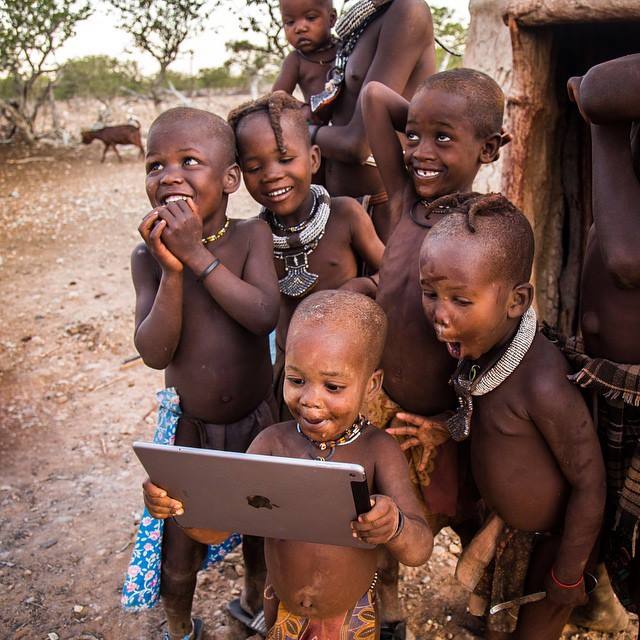
- December 12, 2022
- distance learning, e-Learning, EdTech, Education, Educational Philosophy, Online Ed, open education
Open education consists of the reason and essence for education, as it would be inadequate to contrast the term open education with closed education. It would be impossible to understand any type of closed education. The concept of open education embraces all types of true education and guides it in four directions: open to all populations, open to all geographic locations, open to a diversity of methods, and open to all ideas.
Open education is particularly characterized by the removal of restrictions, exclusions and privileges; by the accreditation of students’ previous experience; by the flexibility of the management of the time variable; and by substantial changes in the traditional relationship between professors and students. On the other hand, online, distance or virtual education or e-Learning is a modality that permits the delivery of a group of didactic media without the need of regular class participation or face-to-face interaction, where the individual is responsible for his own learning.
However, there exists a similar use of both terms as a result of the transfer to other countries of the concept which originally was produced in England, derived from the term ‘University of the Air’ and reinforced by other concepts such as ‘lifelong learning’, ‘permanent education’, ‘endless education’, etc. The transition that the English leaders made with the terms University of the Air and Open University is a product of a reorientation of the objectives and media of this institution. At the beginning, the objective was orientated towards university extension or continuing education and the main media were radio and/or television, but as the idea of the university began to crystallize, it orientated the development towards providing university education for adults, promoting equality of educational opportunities and using all communication media, and the concept was transformed into the open university. This term guides it in four directions: open to all populations, open to all geographic locations, open to a diversity of methods, and open to all ideas. Today, the open university model has been reinforce by the massive use of the Internet and communication media.
 All kinds of programs begin to appear in the world that indiscriminately use the names ‘distance’, ‘virtual’, ‘online’ or ‘open’ without considering the objectives, goals and media which have generated the instruction strategies. This overgeneralized use of these terms has produced confusion in both modality groups with negative consequences in the administrative and philosophic frameworks. While open education is a strategy opposed to traditional education; distance, virtual or online education can be traditional or non-traditional education; the only distinction it has from existing universities is in the mode of instruction delivery. Through distance, virtual or online education we are going to develop the same individual who might have been instructed in the regular university, but with open education, the strategy of learning is different, not only in the media but also in its objectives and processes, which carry with it a different meaning in professional development education.
All kinds of programs begin to appear in the world that indiscriminately use the names ‘distance’, ‘virtual’, ‘online’ or ‘open’ without considering the objectives, goals and media which have generated the instruction strategies. This overgeneralized use of these terms has produced confusion in both modality groups with negative consequences in the administrative and philosophic frameworks. While open education is a strategy opposed to traditional education; distance, virtual or online education can be traditional or non-traditional education; the only distinction it has from existing universities is in the mode of instruction delivery. Through distance, virtual or online education we are going to develop the same individual who might have been instructed in the regular university, but with open education, the strategy of learning is different, not only in the media but also in its objectives and processes, which carry with it a different meaning in professional development education.
In other words, true education relates to cognitive, meta-cognitive and affective outcomes and by no means in relation to the delivery system.Distance education has undergone quite an evolution in terms of its definition, methods, delivery tools and applications. The need for distance education has always been at the forefront. Distance education is neither an isolated concept nor in its practice an isolated creation. It is the education of a special type, like types of education dependent on and influenced by values, opinions, experience and external conditions.
 Globalization has furthered the need for more outstanding continuing education, as world systems seem to be generating a collective need for higher education. The permeability of the Internet has assured that people are no longer just citizens of a nation-state, but of a world. This concept has forced countries to rethink the current conventional means of education and to reconstruct methods providing greater access, keeping in mind the change in student profiles in higher education. Also, the constantly changing needs of society need to be taken into account. We cannot educate for the past. Our education needs to prepare people for the future, and the future always implies uncertainty. It requires an education system to solve new problems and not only an exercise of memory by studying problems that have already been solved.
Globalization has furthered the need for more outstanding continuing education, as world systems seem to be generating a collective need for higher education. The permeability of the Internet has assured that people are no longer just citizens of a nation-state, but of a world. This concept has forced countries to rethink the current conventional means of education and to reconstruct methods providing greater access, keeping in mind the change in student profiles in higher education. Also, the constantly changing needs of society need to be taken into account. We cannot educate for the past. Our education needs to prepare people for the future, and the future always implies uncertainty. It requires an education system to solve new problems and not only an exercise of memory by studying problems that have already been solved.
Along with the technological trends, the terms distance education and open education need to first be differentiated and defined. As I stated in some of my books on the subject, distance, virtual or online education is a didactic system in which teaching behaviors take place apart from learning behaviors. In this way, communication between professor and student remains differentiated in time and in space.
Nevertheless, we can appreciate that our concept utilized is that of “teaching” as a synonym of “instruction” and not of “education”. Why is this distinction so important? We often find numerous educational experiments, that misinterpret and confuse scientific pedagogy with the science of pedagogy or better stated, with educational technology. To further the discussion about interactive distance systems such as teleprocessing and telecommunications within university systems, it is important to first establish a philosophical and empirical base of open, distance or virtual education.
To educate is to learn and teach; instruction rests on an intellectual level and formative education blends into personality development, manifesting in a student’s overall behavior. Within this line of thinking, distance education merely educates at a distance as opposed to face-to-face. Assuredly, in both methodologies, the common denominator is education, not instruction or training. There are other more restricted modalities such as distance instruction, auto-didactic methods, distance training or massive open online courses (MOOC). However, although instruction requires certain formative or human foundational activities, goals are different and accomplishments will never be equal.
On the other hand, what differentiates a university from a training center is that the university is oriented toward the integral development of human beings in harmony to their environment, not only through the teaching of skills and abilities, customary of training centers but also through social and cultural teaching enhancing the growth of the person and the development of ethical codes and aesthetical sensitivity.
Appearances of new psychological processes, and information and communication  technologies add sophistication to teaching methodologies. This was the case in the 50s with correspondence education and in the 70s with educational television using the concept of open or distance education. By the end of the past century, the emerging Internet tools reshaped the formal and traditional delivery system, and distance education became identified with online instruction or e-learning. But there was a major misconception about distance education when it was labeled as open education. For example, distance universities as well as face-to-face universities are open or at least should be open. Open education consists of the reason and essence for education, as it would be inadequate to contrast the term open education with closed education. It would be impossible to understand any type of closed education. It goes against the basic philosophical concept of what education means. Open education could be characterized by: the removal of restrictions, exclusions or privileges; the accreditation of a student’s prior experience; the flexibility of time management; and by the substantial changes in the relationship between student and professor. Distance or online education, however, is defined as a type of education transferred through didactic means that allows individual students the responsibility of their own learning without attending regular face-to-face scheduled classes.
technologies add sophistication to teaching methodologies. This was the case in the 50s with correspondence education and in the 70s with educational television using the concept of open or distance education. By the end of the past century, the emerging Internet tools reshaped the formal and traditional delivery system, and distance education became identified with online instruction or e-learning. But there was a major misconception about distance education when it was labeled as open education. For example, distance universities as well as face-to-face universities are open or at least should be open. Open education consists of the reason and essence for education, as it would be inadequate to contrast the term open education with closed education. It would be impossible to understand any type of closed education. It goes against the basic philosophical concept of what education means. Open education could be characterized by: the removal of restrictions, exclusions or privileges; the accreditation of a student’s prior experience; the flexibility of time management; and by the substantial changes in the relationship between student and professor. Distance or online education, however, is defined as a type of education transferred through didactic means that allows individual students the responsibility of their own learning without attending regular face-to-face scheduled classes.
Because of this, even when a university modifies age limits and entrance requirements, and grants credit for prior learning and work experience, it does not qualify as an open  system of learning, since only policies and norms have been changed. In addition, there is nothing farther from an open form of learning than many of the open, distance and virtual universities that exist today. Many of these institutions are closed to ‘education’ as a formative process, closed to learning through experience or self-learning, closed to time flexibility and closed to innovative didactic methods by substituting the professor with textbooks, content guides, instructional media and accompanied by a tutor in more precarious situations.
system of learning, since only policies and norms have been changed. In addition, there is nothing farther from an open form of learning than many of the open, distance and virtual universities that exist today. Many of these institutions are closed to ‘education’ as a formative process, closed to learning through experience or self-learning, closed to time flexibility and closed to innovative didactic methods by substituting the professor with textbooks, content guides, instructional media and accompanied by a tutor in more precarious situations.
Also, it is a misconception to think that distance or online instruction can reduce the cost of education. Good education is always expensive, independently of the delivery system, and cheap education represents in the long term the most expensive education of all. Many other considerations could be made around this misconceived definition that has been applied to a simple didactic methodology and not to a new conception of education as has been implied. The truth is that open education exists, but its patrimony belongs to any educational institution that complies genuineness with the goals of education.
Education as a general concept should not only include teaching or instruction, but social and cultural learning, as an independent act of an individual and of interaction with his or her peers. It is in the educational process of the person and the society to converge to a genuine education to create experiences in which learning to share, learning to care, learning to be, and learning to carry on learning should be at the core of any educational process. Nevertheless, as stated by John Dewey not all experiences are equally as educational. Thus, one of the central problems of education is the selection of experiences that can result in “evolution, growth or development” in their most widely held connotations. Both, online or distance education and face-to-face education need a major change to direct their efforts toward learners and to prepare them to be lifelong learners as an ethical demand of their lives. Both, in general terms, are falling at the present time in achieving these goals.
References
Escotet, M.A. (2020). Pandemics, leadership, and social ethics. Prospects (UNESCO). Springer (Switzerland), June.
Escotet, M.A. (2014). Universities must be accountable, yes, but to whom?. The Guardian Higher Education Network (London), May, 21-16.
Escotet, M.A. (1998). Adverse Factors in the Development of an Open University in Latin America. In Sewart, Keegan and Holmberg (Eds.) Distance Education: International Perspectives. Kent, Great Britain: St. Martin’s Press, 141-156.
Escotet, M.A. (1992). Information and Formation: The Change of Paradigm in University Distance Learning. In Ortner, G.E., Graff, K and Wilmersdoerfer, H. (Eds.). Distance Education as Two-Way Communication. New York: Lang, pp. 88-101.
Escotet, M.A. (1991). The Transfers of Technology in Education as Means of Modernization in Societies in Transition. Budapest: Batthhyáni Association. 161 pages.
Escotet, M.A. (1980). Tendencias de la educación superior a distancia. SanJosé: Editorial de la Universidad Estatal de Educación a Distancia. 132 páginas.
Peñalver, L.M. and Escotet, M.A. (1981). Teoría y Praxis de la Universidad a Distancia (2 volúmenes). Caracas: Editorial FEDES, 797 páginas.
©2022 Miguel Angel Escotet. All rights reserved. Permission to reprint with appropriate citing.